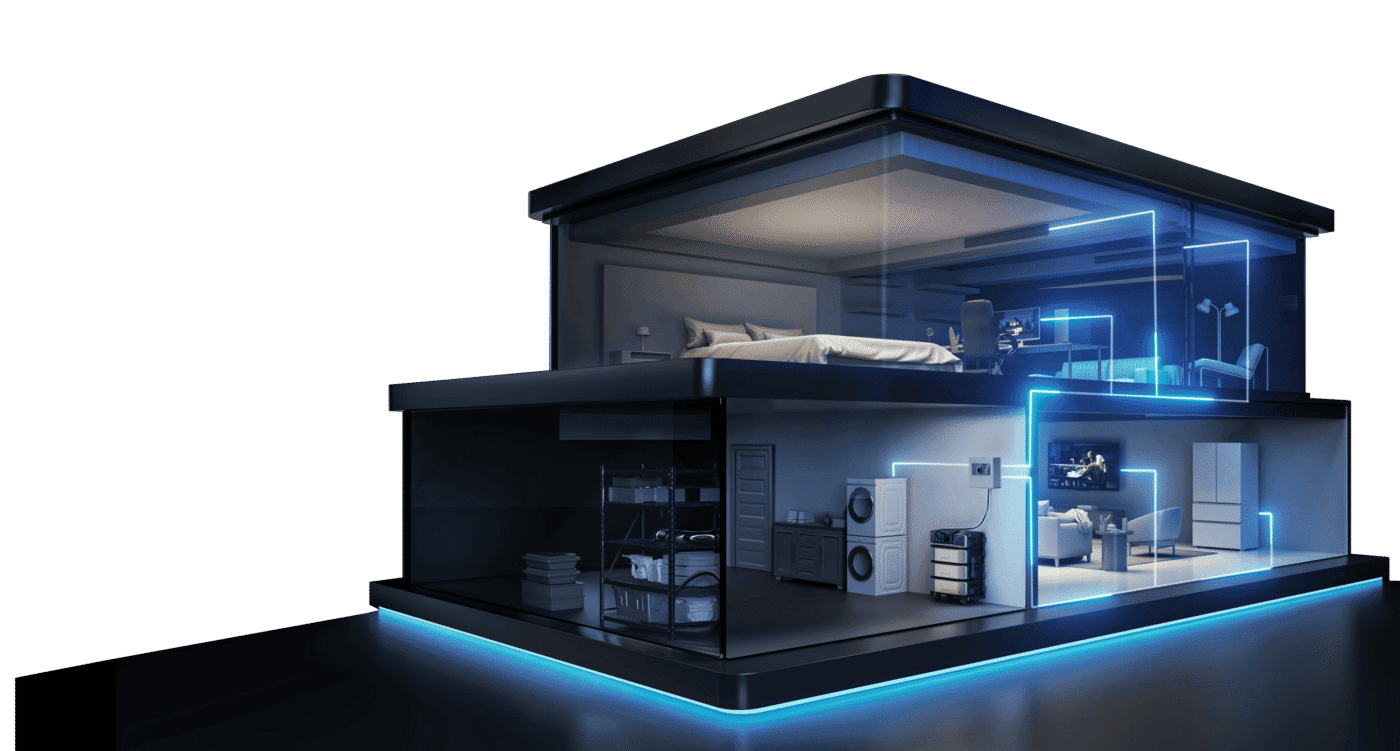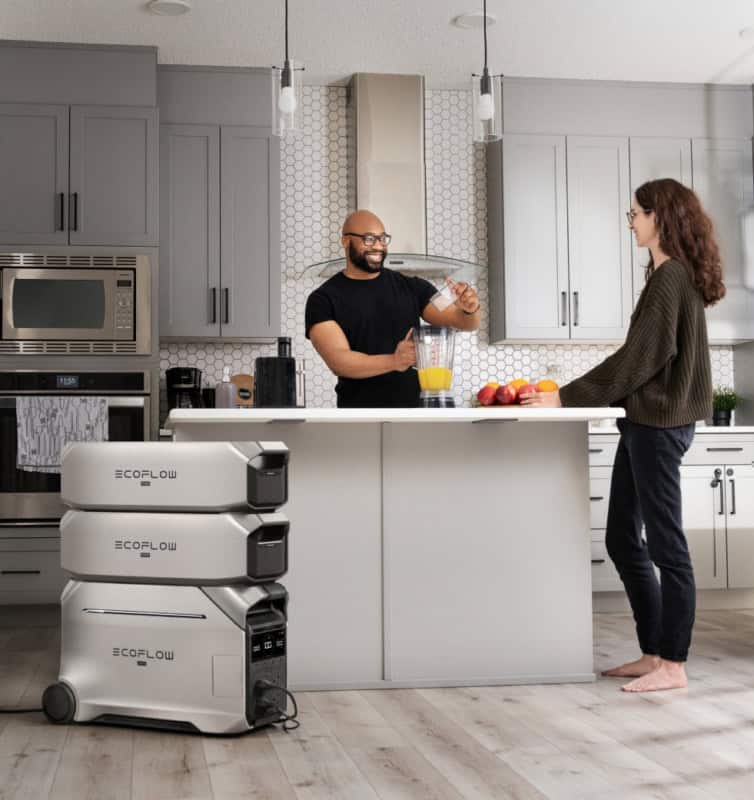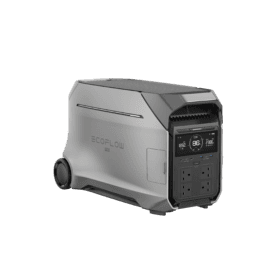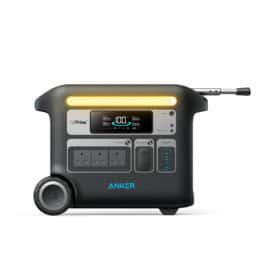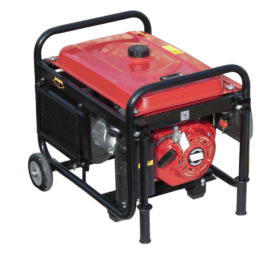Guides
Portable Power Stations vs Petrol & Diesel Generators
A practical guide for Irish households and small businesses
Quick Summary
Portable power stations (battery + inverter) are silent, indoor-safe, and low-maintenance — ideal for short outages, apartments, camping, mobile work, and sensitive electronics.
Typical capacities: 250–4,000 Wh, with inverters from a few hundred watts up to around 3,000 W (higher on some models).
Petrol/diesel generators deliver higher continuous power and unlimited runtime with refuelling, but are noisy, outdoor-only, and need fuel and regular servicing.
For laptops, routers, and IT gear — you need pure sine-wave AC.
That means inverter generators or portable power stations.
The Basics
Portable Power Stations
A rechargeable battery with a built-in inverter and outlets (AC / USB / 12 V).
Charge it from the wall, solar panels, or your vehicle, then plug in your devices.
- Zero fumes
- Very quiet
- Safe indoors
Generators
A small petrol or diesel engine spins an alternator to make AC power.
Runs as long as you keep adding fuel.
* Must always be used outdoors.
Watts vs Watt-hours (and What Really Matters)
-
Watts (W) = how much power you can use at one time.
(Think: “how big a kettle can I run?”) -
Watt-hours (Wh) = how much energy is stored.
(Think: “for how many hours?”)
Typical Off Your Grid power station ranges:
-
250–600 Wh → 300–600 W continuous (routers, lights, laptops)
-
1,000–2,000 Wh → 1,000–2,000 W (TVs, fridges, small tools)
-
3,000–4,000 Wh → 2,000–3,000 W (multiple appliances or short heavy loads)
Generators:
-
Small inverter type → 1,000–2,200 W (quieter, cleaner power)
-
Mid portable → 2,500–4,500 W (louder, heavier; not always pure sine-wave)
Sensitive electronics need pure sine-wave output.
Power stations are pure sine by design; for fuel generators, choose inverter models.
Runtime: Simple, Realistic Maths
Portable power stations:
Runtime ≈ (Battery Wh × 0.85) ÷ Device W
(0.85 factor = losses + reserve)
| Example | Runtime |
|---|---|
| 250 Wh → 40 W router | 5.3 hours |
| 1,000 Wh → 100 W TV | 8.5 hours |
| 2,000 Wh → 150 W fridge | 11.3 hours |
| 4,000 Wh → 500 W load | 6.8 hours |
Generators:
Runtime depends on tank size and load. Small inverter units typically run 5–8 hours per tank; larger ones longer. Refuel to continue.
* Allow for surge watts — fridges, pumps, tools can momentarily draw 2–3× their running watts.
Up-Front vs Running Costs
Power stations:
Higher purchase price, very low running cost (recharge from mains or solar).
Generators:
Lower initial cost, but ongoing fuel + servicing quickly add up.
Also consider safe fuel storage.
Noise, Emissions & Where You Can Use Them
| Feature | Power Station | Generator |
|---|---|---|
| Noise | Silent / very quiet | Noticeable – loud |
| Emissions | None | Exhaust / CO |
| Indoor use | Safe | Never |
Power stations are perfect for housing estates or apartments; generators are outdoor-only.
Maintenance & Lifespan
Power stations:
Minimal upkeep — batteries degrade slowly after many cycles.
Modern LiFePO₄ cells last years.
Generators:
Need oil, filters, plugs, and fresh fuel.
Higher effort, but can run indefinitely with maintenance.
Portability & Ease of Use
Power stations:
Grab-and-go, one-button start, compact for cars and campers.
Generators:
Heavier, need fuel, outdoor placement, and manual start.
Irish-Specific Notes
-
Noise in estates: Power stations avoid local by-law issues entirely.
-
Safety: Generators only outdoors — use CO alarms regardless.
-
Home backup: Always use a qualified electrician for a transfer switch — never back-feed through sockets.
Which Suits You?
Choose a portable power station if you want:
- Quiet, indoor-safe backup
- Reliable power for short outages, camping, or mobile work
- Clean sine-wave power for electronics
Choose a generator if you need:
- High continuous power for tools or large loads
- Multi-day runtime with refuelling
- Outdoor setup and noise aren’t an issue
Many Irish homes use both:
A compact power station for convenience, plus a generator for rare long emergencies.
Side-by-Side Comparison
| Feature | Portable Power Station | Petrol/Diesel Generator |
|---|---|---|
| Power quality | Pure sine-wave (ideal for electronics) | Inverter models = pure sine; basic = “dirty” power |
| Typical output | 250–4,000 Wh / 300–3,000 W | 1,000–5,000 W+ |
| Runtime | (Wh × 0.85) ÷ W | Tank size / load |
| Noise | Very low | Moderate – high |
| Emissions | None | Exhaust / CO |
| Maintenance | Minimal | Regular servicing |
| Up-front cost | Higher per W | Lower per W |
| Running cost | Low | High (fuel + oil) |
| Indoor use | Yes | No |
| Ease of use | Plug-and-play | Manual operation |
Handy Sizing Tips
-
List what you’ll power and note each device’s watts.
-
Total your simultaneous watts; keep below your inverter’s continuous rating.
-
Estimate runtime with (Wh × 0.85) ÷ Watts.
-
For generators, size to your highest expected continuous load + surge.
Need Help Sizing?
Tell us what you want to run (e.g., fridge 150 W, router 15 W, lights 40 W, TV 100 W) and for how long.
We’ll calculate runtimes and recommend a right-sized setup — brand-neutral, Ireland-specific advice.
Get in Touch
We’re based in Kildare and deliver across all 32 counties.
Whether you’re preparing for storm season, powering a business, or kitting out your camper —
Off Your Grid can help you find the right clean energy solution.
⚡ Power Anywhere. Anytime.
Explore Portable Power Stations →
